- Moroccan Interior Design: How I Learned to Stop Worrying and Love Bold Colors - September 4, 2025
- Modern Indian Design Style: When Tradition Meets Today’s Living - September 3, 2025
- Twenty Years of Getting Indian Traditional Design Wrong (And Finally Right) - September 3, 2025
Table of Contents
I’ve been designing interiors for over 18 years, and I’ll be honest: tribal design is one of the most misunderstood styles out there. Walk into any furniture store and you’ll see “tribal-inspired” pieces that make me cringe. Let me share what I’ve learned from actually visiting indigenous communities and working with authentic artisans.
Here’s What Tribal Design Actually Means
Forget everything you think you know about tribal interior design. Those mass-produced “African” masks at HomeGoods? Not even close. Real tribal design comes from thousands of years of indigenous communities creating beautiful, functional objects from whatever materials their environment provided.
I remember sitting in a small village outside Marrakech, watching a craftsman weave a rug using techniques his grandmother taught him. Every knot told a story. Every color choice had meaning. That’s tribal design. Here’s the picture of that beautiful rug I captured – take a look.
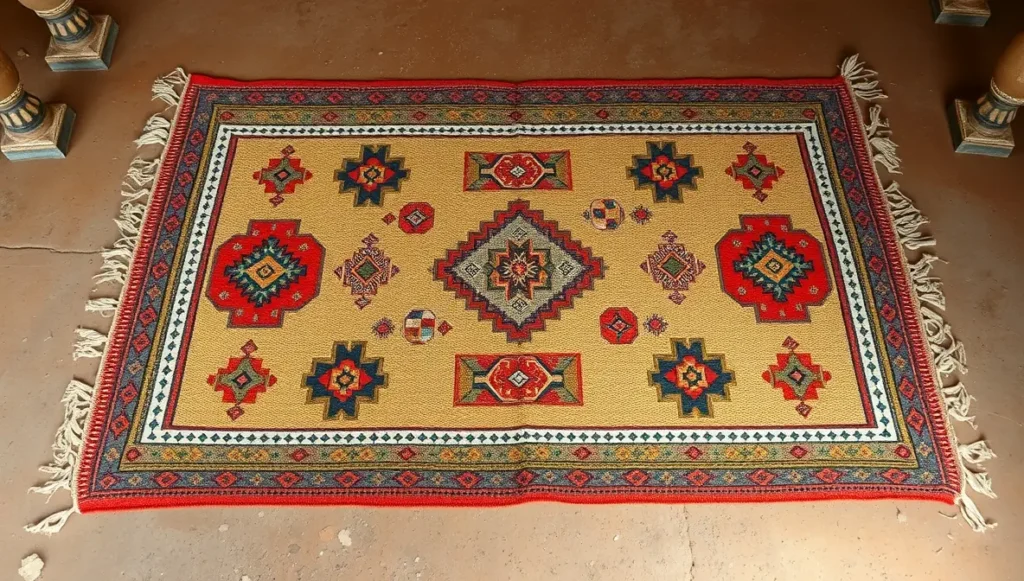
What makes it special:
- Everything is made by hand, usually by the same person who designed it
- Materials come straight from nature with minimal processing
- Patterns and symbols carry deep cultural meaning
- Function matters just as much as beauty
- Nothing is precious or untouchable
The Foundation: Colors, Textures, and Materials
Colors Pulled from the Earth
Real tribal colors aren’t chosen from a Pinterest board. They come from crushing berries, mixing clay, burning wood for charcoal. That’s why authentic tribal palettes feel so grounded.
I start every tribal project with what I call the “dirt test.” If I can’t imagine finding these colors by literally digging in the ground or grinding natural materials, they don’t belong. Burnt orange from iron-rich soil. Deep brown from bark. Cream from bleached bone.
Then I add one or two bright accents. Maybe turquoise from a mine in New Mexico. Deep red from cinnabar. These pops of color hit like lightning against all that earth tone.
Textures You Can’t Stop Touching
Here’s something I learned the hard way: tribal design fails if everything looks perfect. The beauty lives in the irregularities. Hand-carved wood still shows chisel marks. Woven textiles have slightly uneven tension. Pottery bears the potter’s fingerprints.
On one project in the Austin countryside, I covered a sectional with throws from three different continents. Alpaca wool from Peru (incredibly soft but with visible spinning variations). Mud cloth from Mali (rough texture with hand-painted symbols). Sheepskin from Iceland (naturally irregular shape and color). The combination shouldn’t have worked, but it created this incredible layered landscape that guests couldn’t stop exploring with their hands.
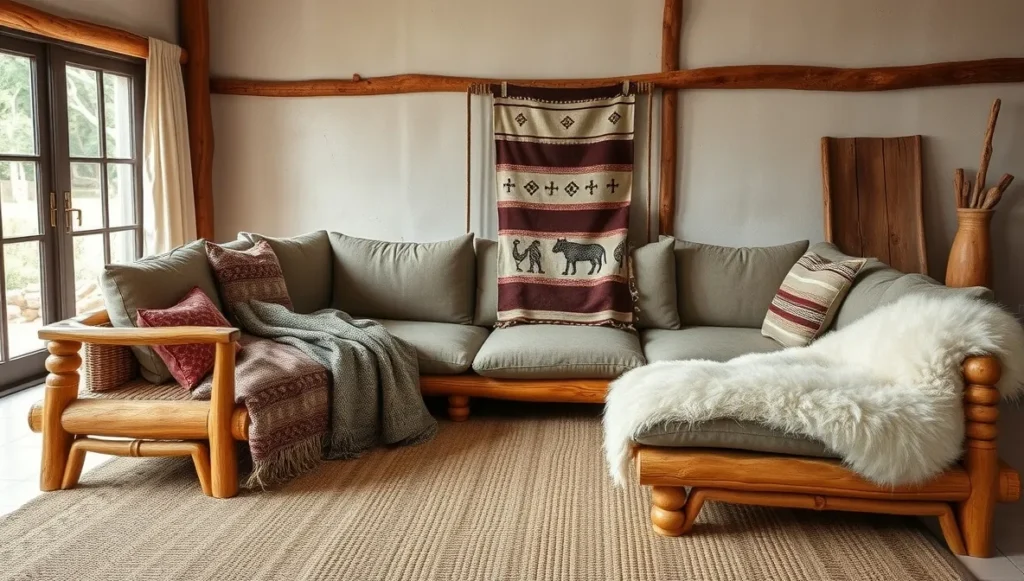
Materials That Remember Their Origins
I refuse to use fake anything in tribal design. If it’s supposed to be wood, it better have growth rings and natural grain variation. If it’s stone, I want to see where the chisel hit it.
My current favorite sources include reclaimed teak from old fishing boats in Indonesia, river rocks from Colorado streams, and hand-forged iron from artisans in Oaxaca. Each piece arrives with its own history already built in. Here they are in the order I mentioned.
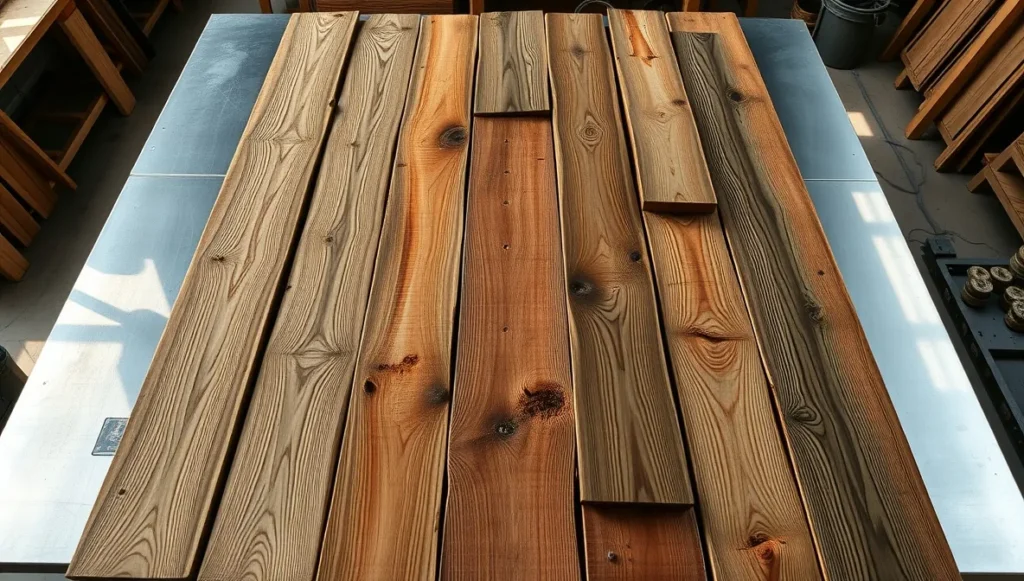
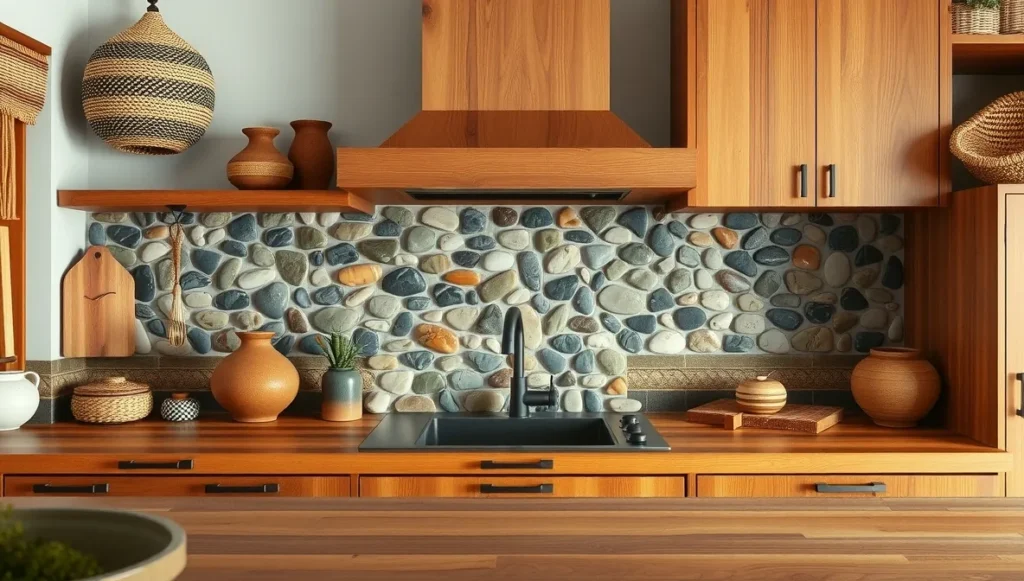
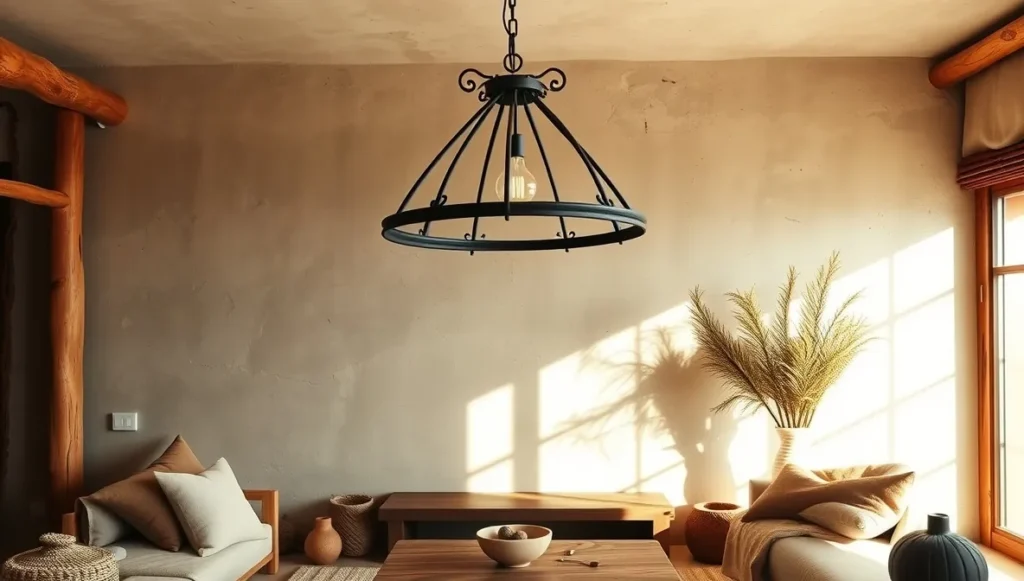
Getting the Furniture Right
Seating That Brings People Together
Tribal cultures figured out something we’ve forgotten: furniture should encourage human connection. High-backed formal chairs create barriers. Low seating breaks them down.
I always include floor cushions and ottomans that people can move around depending on the conversation. Moroccan leather poufs work great because they’re comfortable but not so comfortable that anyone disappears into them for hours scrolling their phone.
Storage That Doubles as Art
Best tribal storage solution I ever found? A set of Ethiopian market baskets at an estate sale in Portland. The family had brought them back from a diplomatic posting in the 1960s. Coiled grass construction, natural dyes, perfect for hiding clutter while looking like sculpture.
That’s the sweet spot: storage that’s so beautiful you want to display it, but functional enough to actually use.
Room by Room: Making It Work in Real Life
Living Rooms That Actually Live
Forget the museum approach. Tribal living rooms should feel lived-in from day one. I arrange seating in conversation clusters, never in straight lines facing a TV. Coffee tables made from tree slabs anchor the space. Throws and pillows get tossed around and rearranged.
The best tribal living rooms I’ve designed feel like you could host a dinner party for eight or settle in alone with a book. Flexible and welcoming.
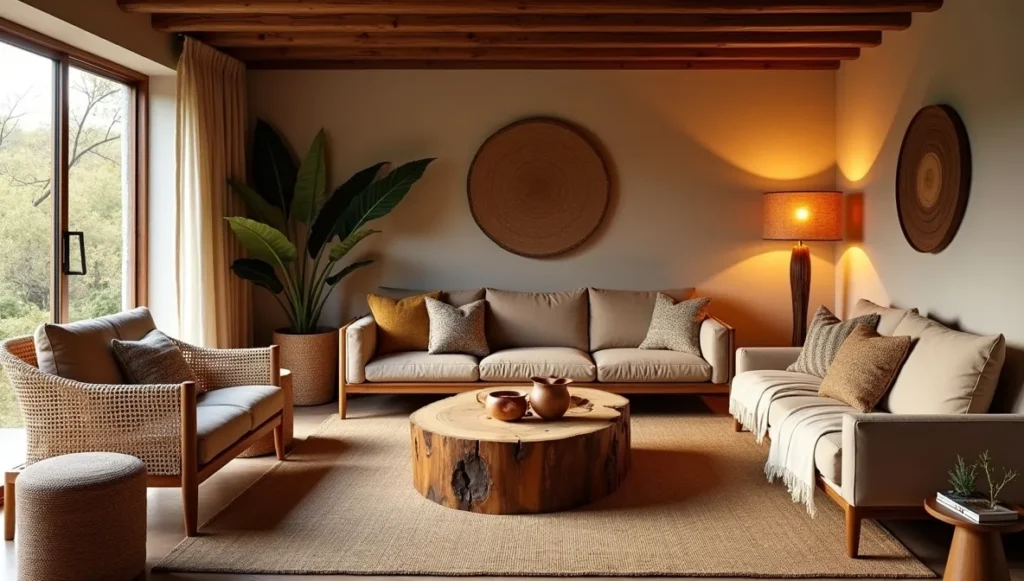
Bedrooms for Deep Rest
Tribal bedrooms work because they feel protected. Heavy wooden bed frames create a sense of shelter. I layer textiles like crazy here. Multiple blankets, throws, pillows in different textures and patterns. It’s like building a nest.
Storage trunks at the foot of beds solve the “where do I put extra blankets” problem while adding another handcrafted element.
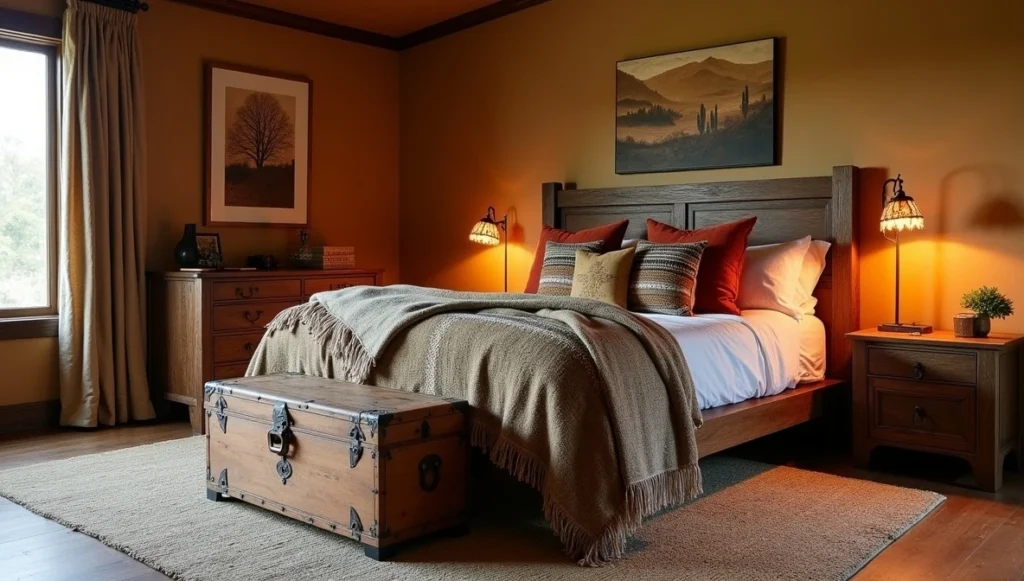
Kitchens Built for Real Cooking
The tribal kitchen celebrates food preparation as a daily ritual. Hand-thrown pottery for serving. Wooden cutting boards that show knife marks and wear patterns. Copper pots that develop gorgeous patinas from actual use.
I display cooking tools and serving pieces on open shelving. Why hide beautiful handmade objects in cabinets?
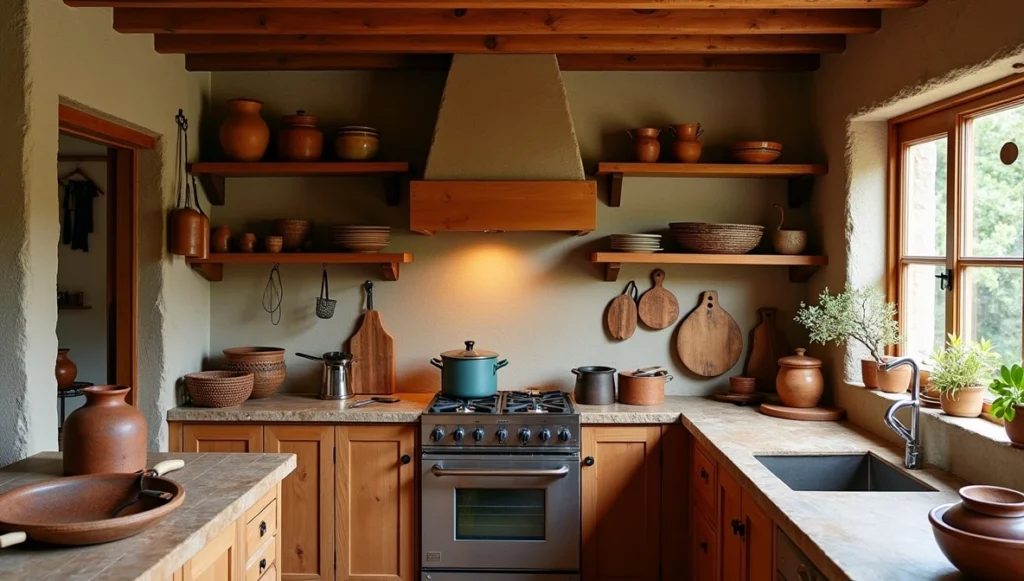
Dining Rooms That Celebrate Community
Tribal dining rooms understand that eating together is sacred. I start with solid wood slab tables that can handle real life, then mix seating heights – wooden benches with individual chairs and carved stools that float between spaces. Skip predictable chandeliers for Moroccan metalwork pendants or Ethiopian basket lights.
Display serving pieces you actually use: hand-thrown pottery, wooden bowls with knife marks, woven placemats. If it’s too precious for Tuesday tacos, it doesn’t belong here.
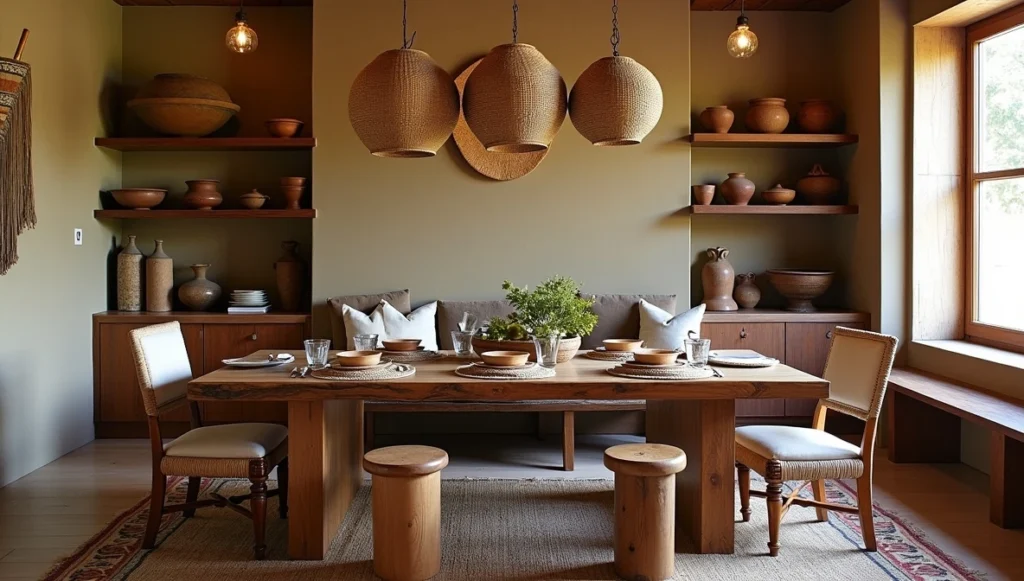
Home Offices That Actually Work
Tribal workspaces make you want to create something meaningful instead of grinding through emails. Hunt for desks with character – old monastery tables or carpenter’s workbenches with patina that shows good work takes time.
Use vintage market baskets for files, wooden crates for organizers, Ethiopian coffee containers for pens. Hang actual tools as art – hand-forged chisels, vintage weaving shuttles in shadow boxes. These remind you that creativity and craft go hand in hand.
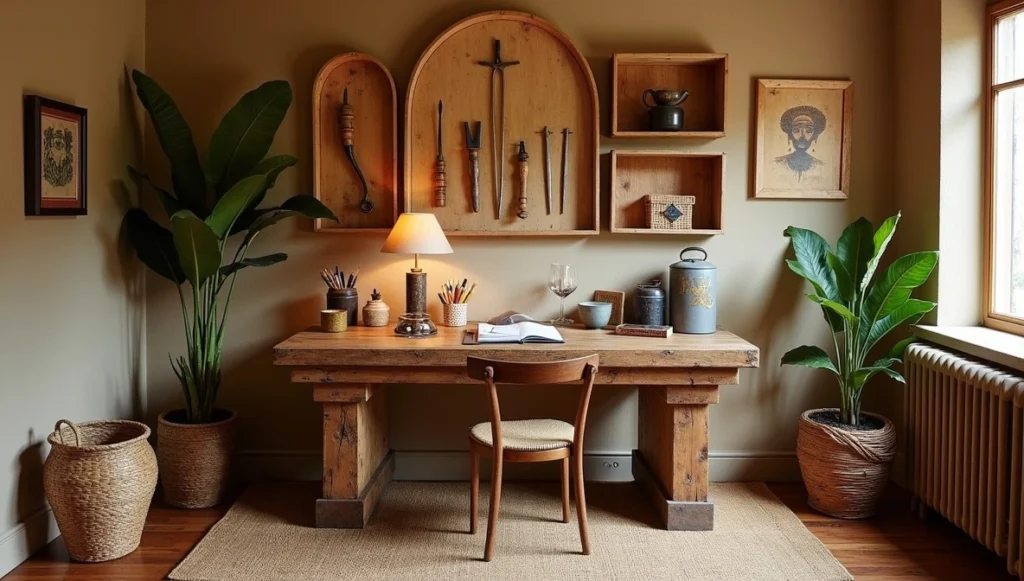
Bathrooms as Daily Retreats
Tribal bathrooms channel those amazing natural hot springs you find in indigenous territories. Stone surfaces, wooden vanities, copper vessel sinks. River rock shower floors that massage your feet.
The goal is making your daily routine feel like a mini spa treatment.
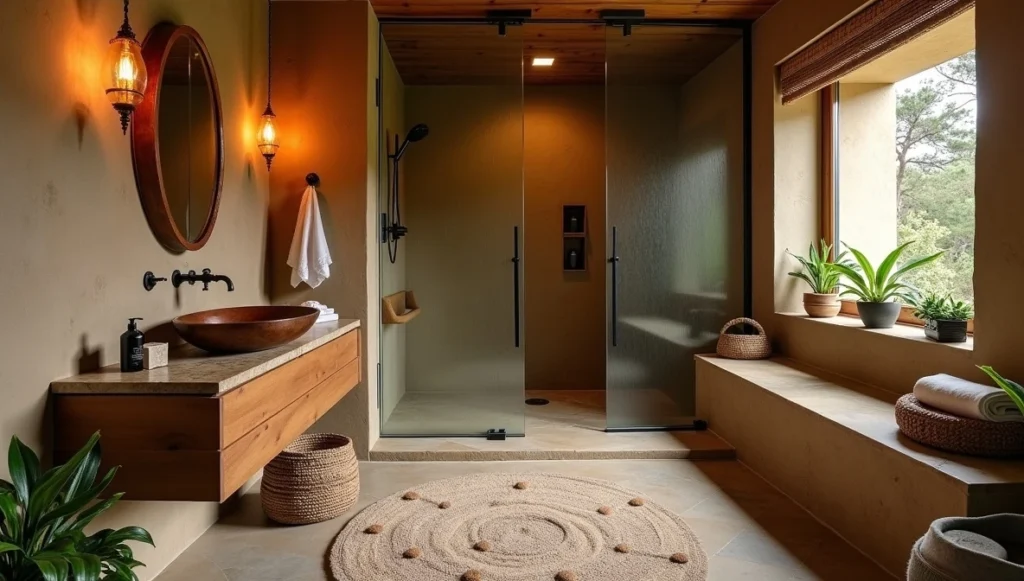
Finding Authentic Pieces (Without Getting Ripped Off)
Sources I Actually Trust
After getting burned by fake “authentic” pieces early in my career, I’ve gotten pretty good at spotting the real deal. My go-to sources:
Direct from artisan cooperatives when I travel. Estate sales in areas with international populations (diplomats, professors, military families often have amazing collections). Galleries that specialize in tribal arts and can tell you exactly who made each piece and where.
Red Flags That Scream “Fake”
Perfect symmetry in supposedly handmade pieces. Synthetic materials. Pieces with no cultural context or story. If the seller can’t tell you anything about the origin or meaning, walk away.
Machine-made patterns look too regular. Hand-carved wood shows tool marks and slight variations. Hand-woven textiles have tension irregularities and color variations.
Common Mistakes (That I’ve Made Too)
Going Full Theme Park
My biggest early mistake was treating tribal design like a theme. I once decorated a client’s den to look like an African safari lodge. It felt like a movie set, not a home.
Now I mix tribal pieces with contemporary elements. A sleek modern sofa anchored by an authentic tribal rug. Contemporary lighting that highlights traditional wall art. The tribal elements add soul without taking over.
Ignoring Cultural Respect
This matters more than aesthetics. Some objects carry sacred meaning and don’t belong in casual home decor. I research every piece I recommend and sometimes advise clients against certain items if they’re not appropriate for non-indigenous homes.
Why This Style Works Right Now
We’re living through peak digital overwhelm. Everything feels processed, mass-produced, temporary. Tribal design offers the opposite: objects made by human hands, materials pulled from the earth, designs that have worked for centuries.
Plus, these pieces age beautifully. While your Ikea bookshelf falls apart in five years, a hand-carved wooden stool gets more beautiful with every scratch and ding.
When I see clients really connect with tribal design, it’s not because they’re following a trend. It’s because they’re craving something real in a world full of fake.
